Intro
From the autumm of 2007 to the spring of 2011 I had the good fortune of living in Vienna. I soon realised that the city has a very special café scene. I shouldn’t call them cafés, though. You get cafés everywhere. Only the Austrian capital can do a Kaffeehaus in all its old world charm, its staid and slightly run-down grandeur.
Every day I walked and cycled past any number of gorgeous coffeehouses, but hardly ever bothered with them because I was convinced that I was brewing superior stuff in my own kitchen. At the time this was probably true, because it was before third-wave or specialty cafés landed. But what I didn’t have at home was the incredible ambience and tradition and history of Viennese coffeehouses, and I eventually realised this. I was late to the party, but better late than never, right?
So these Viennese grounds are a seperate collection from my home grounds. I collect them for different reasons, they are stored seperately, and my hope is that they’ll end up in a different place.

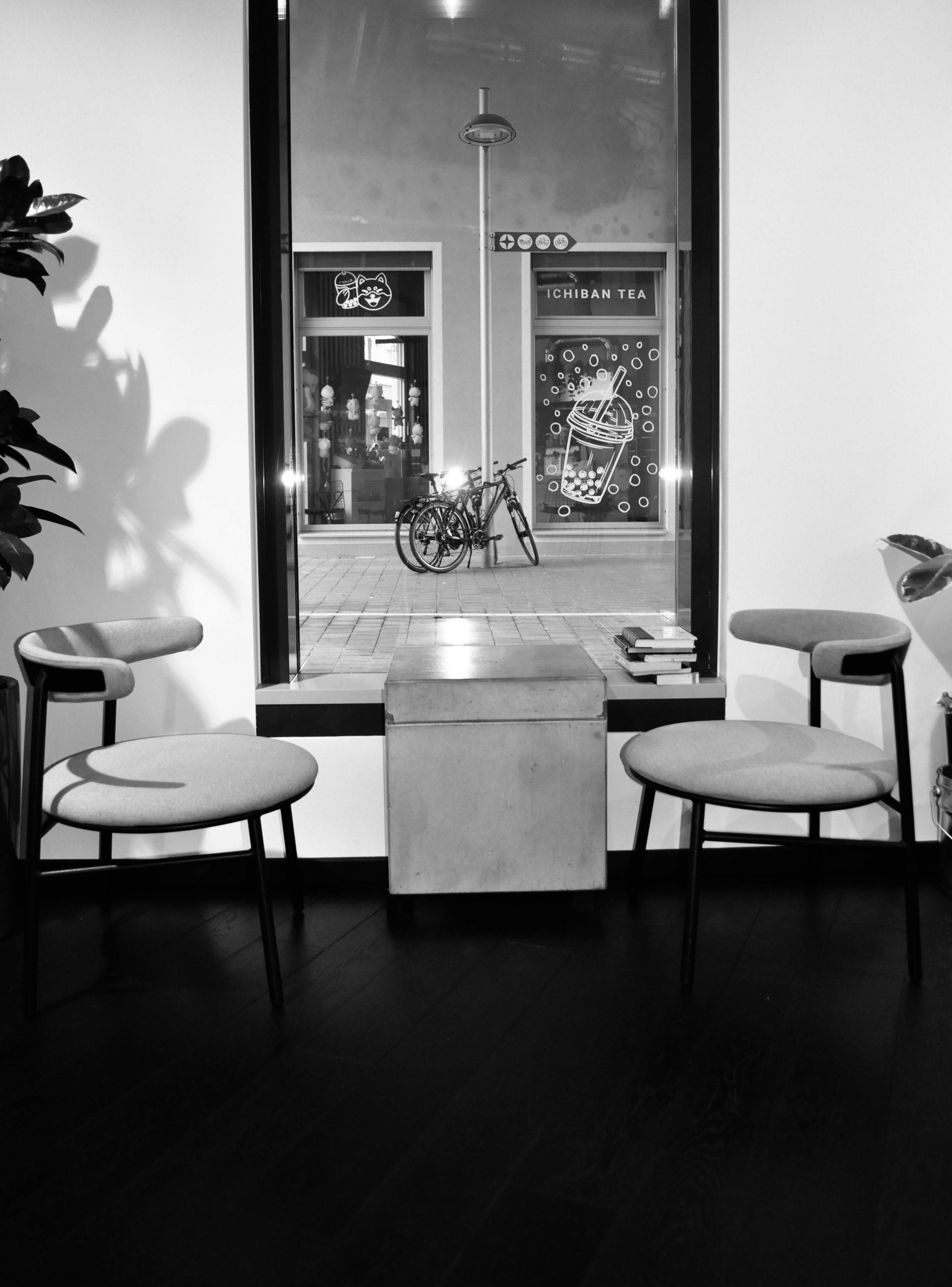
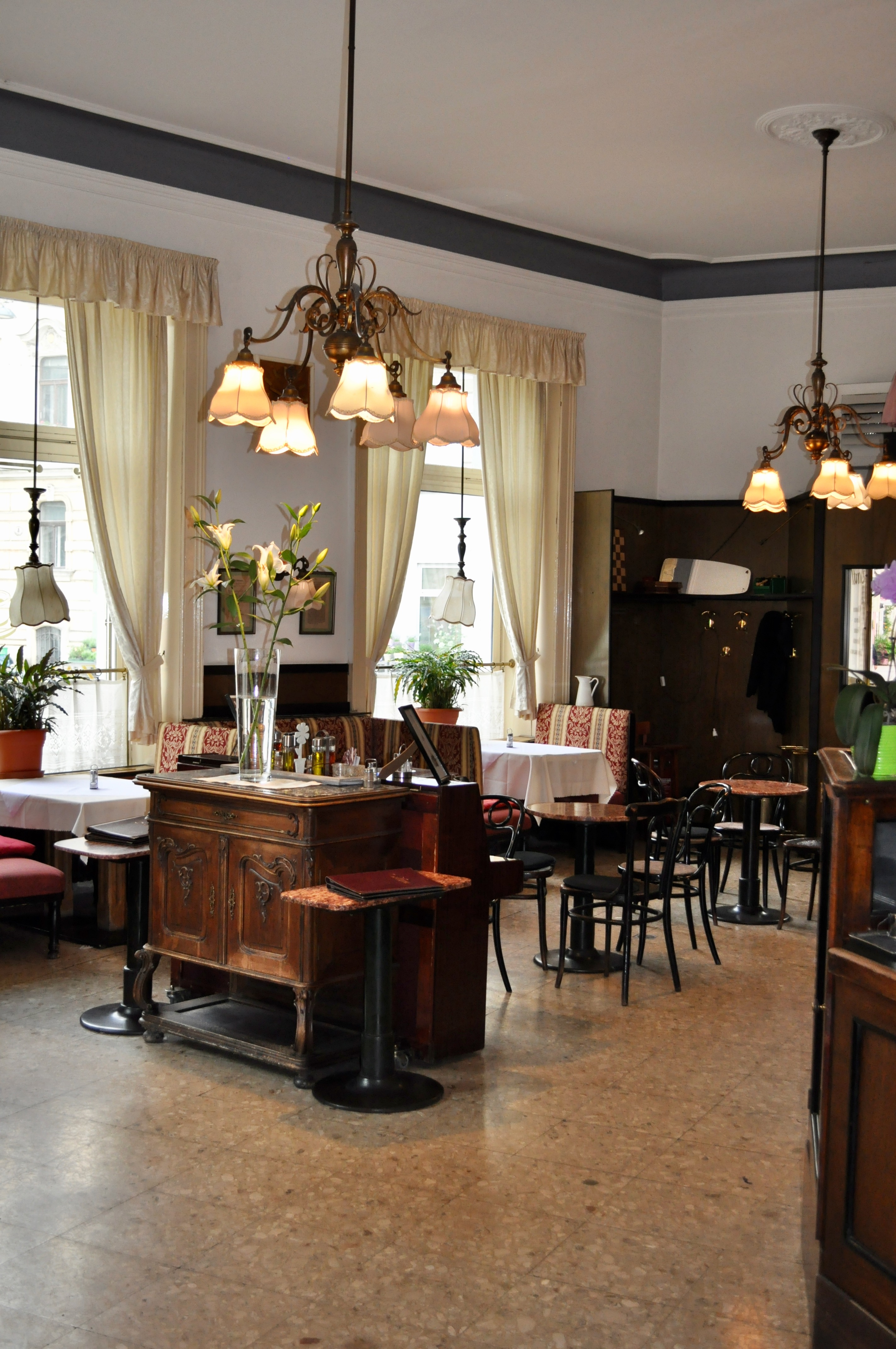


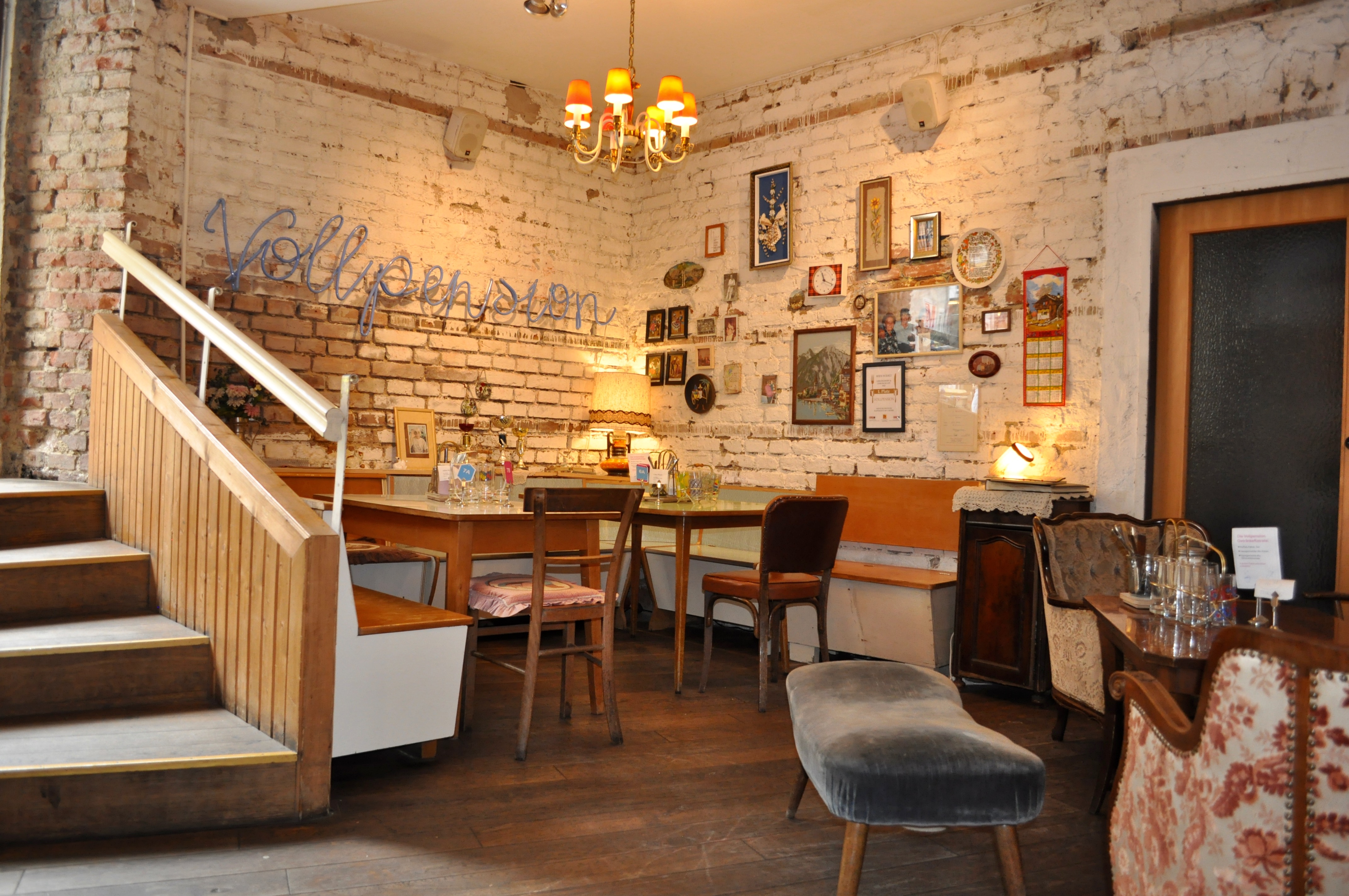
A few Viennese cafés, clockwise from top left: Café Goldegg, Vogel Kaffee, Café Zartl, Jonas Reindl Coffee Roasters, Vollpension, Café Schopenhauer.
Whereas the fascination of home grounds is rooted in everything that happens down on the coffee farm to produce such a delicious product, it’s the opposite end of the coffee value chain for Viennese grounds. They are a love letter to the distinct pleasure of drinking coffee and whiling away the hours in a Viennese coffeehouse, and to the rich history and culture that underpins and has grown around it.
They are also artifacts.
Cafés go bust like nobody’s business and who can say whether they deserved to or not? What I do know is the sinking feeling in your stomach when, a spring in your step, you walk up to your one of your favourite coffeehouses and find yourself confronted with a newly opened buffet restaurant or retail fashion outlet instead. Your brain hiccups and for a few seconds you ask yourself if you’re in the wrong street, the wrong city, or a dream.
Nothing remains. Everything from the espresso machine to the wallpaper has been turned into cash or rubbished, the staff and customers scattered to the winds to find new livelihoods and sanctuaries. Perhaps a few photographs remain. And fond memories of course.
I’m sad to report that in the short time I’ve been collecting Viennese grounds, they now include the last artifacts from the following magnificent coffeehouses that are no more:
- Café Fichtl, Schloßhofer Straße, 425 g collected in 4 visits
- Café Aumannhof, Währinger Straße, 701 g in 5 visits
- Café Servus, Mariahilfer Straße, 246 g in 2 visits
- Café Sperlhof, Große Sperlgasse, 64 g in 3 visits
- Café Schottenring, Schottenring, 1.3 kg in 11 visits
A few numbers
- I’ve collected from 197 cafés spread across Vienna’s 23 districts.
- Viennese grounds now weigh 96.2 kg in total, making for an average of 488 g per café.
- I try to collect numerous samples from as many cafés as possible. The maximum is 14 samples from a single coffeehouse, with the average currently standing at 3.914 samples per café.
Since leaving Vienna in the spring of 2011, growth has obviously been much slower. I love visiting the city and apart from an enforced lull during the pandemic, have done so every year.
- Since I left Vienna I’ve collected an average of 1.72 kg per year. While I still lived in the city, it took me an average of 18 1/2 days to collect the same amount.
- Living in Vienna, I travelled an average distance of 35.2 km per kg of grounds collected, mostly by bicycle, with a miniscule proportion on foot. After having left, I travelled an average of 645 km per kg collected, per train.
Location and names of the 193 cafés from which Viennese grounds have been collected to date. Duration 3:23
Further reading
There is a bit more text for who would like to know a bit more about Viennese grounds. It is still a work in progress. For now it includes:
- A brief word of of thanks to the waiters who handed over the goods
- How I choose which cafés to collect from
- Coffeehouses and books, a match made in heaven, also in Vienna
- Spent coffee grounds drenched, sooner or later, in history
A massive thanks to the Wiener Kellner
Most of the Kellner (waiters) were very gracious about it. They deserve extra kudos for also accomodating me whenever I happened to show up during busier times. Although I often read annoyance on their faces, they mostly took the half a minute or so needed to fill up my container with spent grounds from their knockbox. Thirty seconds may not sound like much, but it is for a waiter with many tables of impatient customers. I’ve never waitered a day in my life, but you’d have to be pretty dumb and/or numb to not empathise with a waiter during rush hour. So I’d like to use this opportunity to express my sincerest gratitude to all the Wiener Kellner and Kaffeesieder. This literally wouldn’t have been possible without you.
Haben Sie vielen herzlichen Dank!
They often asked what I want the grounds for, to which I always replied “für die Blume” (fertilizer for my house plants), a white lie to keep the procedure running as smoothly and swiftly as possible. Just imagine I had tried to explain what I really do with them, over the din of a coffeehouse counter in full swing!
I’m sorry for so repeatedly bending the truth and I’m happy that the truth is finally out there. Now you know what I was and am really up to. We all appreciate geraniums and petunias in full bloom (in Austria we particularly love them in boxes on window ledges). I hope that my efforts will prove to reflect a different kind of beauty, one that outlasts the colourful explosions of any one season.
Developing selection criteria
The first time I visited Vienna, my future wife took me on extended walkabouts and showed me all of the imposing sights. She also figured that no tour of the city would be complete without having a coffee at the Café Landtmann. Although we had ourselves a grand time, under normal circumstances this kind of place is not my cup of tea. I soon discovered many cafés that were even more beautiful, to my eyes, and where I’d also feel comfortable whiling away an hour or two in, where I wouldn’t feel out of place. This is very important. You have to find a coffeehouse that feels good and right to you. It is meant to be a third place, a kind of mash-up of your own living room and a public hall. What fits the bill will be different for different people. Also, no single place will always suit your needs. Depending on your mood, where you happen to find yourself in the city, the weather, whom you are meeting with (if anybody) and why, an old favourite might not do and an unexpected option turn out to be just the place.
This means that when I finally started collecting Viennese grounds, one and half years later, I strove to see the beauty of any café I walked into not only through my own eyes. There are more than 2000 cafés in Vienna and although my goal was never to get anywhere near that number, I wanted the collection to reflect the variety of coffeehouse styles that Vienna offers.
I needed a set of selection criteria, in other words. These emerged, I want to say, organically. Through learning by doing. Trial and error. In my initially zeal, I overshot the mark on the modest end of the spectrum by collecting a few samples from tiny, dark establishments that had very little to do with coffee despite being called Café something or other. Their patrons were far more likely to order beer or energy drinks. The air inside was thick with smoke and the interior decoration consisted largely of cigarette vending machines and one-armed bandits.
This, it soon dawned on me, was where I had to draw a line. Questions of interior decoration are subjective and I may be mistaken about how much coffee a place serves or not. These are not clear-cut criteria. But the gambling machines are.
I also overshot by collecting a few samples from establishments that were wonderful in a number of ways, but not strictly coffeehouses. They do serve coffee and it could even be of above-average quality, but that is not the heart of their business. Like a child in a candy store, I got carried away. Such establishments include:
- Fromme Helene, a very nice restaurant from which I collected 392 g in 3 visits
- The Stadtkino and the Gartenbaukino, both art house cinemas: 138 g in 1 visit and 430 g in 3 visits, respectively
- Zanoni & Zanoni, a great ice cream place on the Lugeck: 341 g in 2 visits
So that’s the bare bones of it: Serving freshly brewed coffee must be at the heart of its business model and it may not have a gambling machine on the premises. Any establishment within Vienna’s border that meets these two simple conditions is a place I could hit up for spent grounds.
Reality is messier, as we know. Although I’ve stuck to my bare minimum standards, with no exceptions, from that day onwards, I do fall short in my ideal of impartiality. Because I have a few favourites and can’t help returning to them time and again. Which I do out of love and fear. The fear being that they might one day go under. Love draws me in, this fear propells me. It’s a slight but relentless push I feel in their direction, to collect what will hopefully turn out to not be a last sample.
This ties in with something that is not a selection criteria per se, but a guiding principle always in the back of my head. At the same time that I strive to steadily grow the number of cafés collected from (currently at 193), I also try to collect multiple samples from as many coffeehouses as possible. I aim for coverage and depth.
Kaffeehaus literature
Some coffeehouses look back at an illustrious heyday during fin de siècle Vienna when well-known writers, painters, architects and intellectuals congregated beneath their vaulted ceilings.
Most of these artists will not be known to an anglophone audience more than a century later. Stephan Zweig, who frequented the Café Griensteidl on the Michaelerplatz, might be an exception. Perhaps Arthur Schnitzler, in a round-about way. He was also of the Griensteidl set. His novella Traumnovelle (1926) was adapted into the 1999 film Eyes Wide Shut by Stanley Kubrick. (The Griendsteidl had many incarnations, only the first of which, from 1847-1897, stood under so bright a star. Its third, from 1990-2017, is the one I collected 605 g from in 4 visits.)
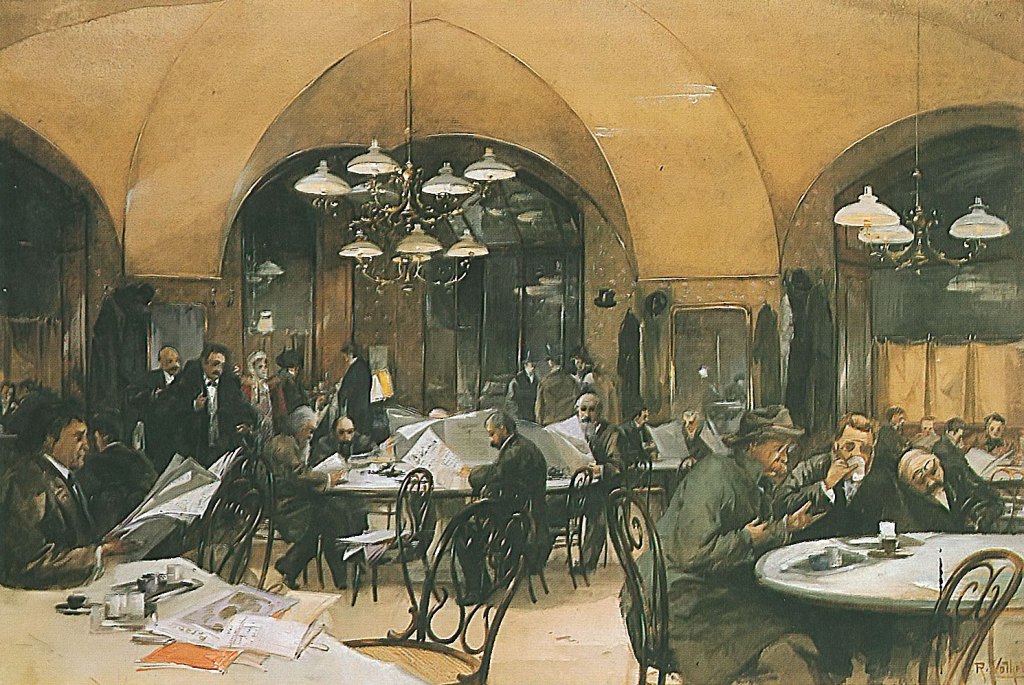
Café Griensteidl, Reinhold Völkel, 1896
Some of these writers preferred working in their favorite Kaffeehaus, in which they had a table—their table—permanently reserved for them. Peter Altenberg even received his post in the Café Central. To this day you may see bookish tourists snapping pictures of otherwise perfectly normal tables. Having such famous guests as regulars lent an undeniable prestige to the house in question. The danger was that it would become too well known and attract a great number of rubbernecks, who would then scare off the flock of rare birds. Off they’d go flapping and cawing, circling around the first district a few times before landing again in a fresh Kaffeehaus with arched ceilings. That at least is how I like to picture it. The truth is more mundane. When the first Griensteidl closed in 1897, most of them simply relocated to the Café Central, all of two hundred and seventy meters down the Herrengasse (and from which I collected 474 g in 5 visits more than 100 years later).
After the wars and the occupation, it was the Café Hawelka (960 g in 6 visits). One of its famous regulars I’d like to mention was Friedensreich Hundertwasser, a visual artist and architect whose Hundertwasserhaus, an expressionist apartment building, can be marvelled at on the corner of the Löwengasse and the Kegelgasse in Vienna’s third district.
I want to provide one more example from more recent times. It’s from a different city, but I cannot think of a more powerful illustration of the glow that can be imparted to a café when it happens to serve as a maternity ward for a famous work of art. A near penniless J.K. Rowling wrote parts of Harry Potter and the Philosopher’s Stone (1997) in Nicolson’s Café in Edinburgh.
As if her rags-to-riches story was not fantastical enough, but merited embellishment, publishing mythology now has it that she sat there writing with her first infant child in her lap, to save on heating costs in her flat.
How fantastic would it be to have a sample of grounds from Nicholson’s Café collected during that time? You could look at that bit of brown powder and wonder: maybe she drank some of the coffee that was extracted from this very stuff, maybe its caffeine coursed through her veins as she was writing up this magical world? What a thought! You’d never know but it hardly matters. Any old grounds from this café would be special enough. That window has sadly closed because the café doesn’t exist anymore. In its place there is now a Chinese restaurant called Buffet King.
It’s not the case that I’m hot for celebrity, or that I hope to one day collect such hallowed grounds. I suppose the sweetness of being part of a crowd in a café is a luxury no longer affordable to the good Ms. Rowling. But even if it was, I wouldn’t be gung ho to collect her grounds. That strikes me as more than a little creepy, an unappetizing blend of autograph hunting and dumpster diving. No, I mention these examples because many people understand them intuitively. Making a connection between a café and a person, and between both of them and a handful of unassuming brown powder, for better or worse comes more naturally to us if that person is famous.
The beautiful interiors of these cafés, their extravagantly high ceilings, their histories and traditions are wonderful, but ultimately, it’s the thousands of coffee drinkers that I find most fascinating. They are the soul of the Viennese grounds collection. That they are unknown and anonymous only adds to the fascination.
Who were they? What kind of a day were they having? Did they come to enjoy a few precious minutes or hours by themselves, in these intimately public spaces? Or did they come with a friend, a perspective employer, a mistress, a couchsurfer? What was discussed? What were they trying to build up, or what were they trying to tear down? You can let your mind run wild. As Jim Morrison wrote: “we could plan a murder, or start a religion.”
Think of this as an alternative to tasseography, the traditional humbug of fortune-telling by reading the dregs left over at the bottom of somebody’s cup. That is one of the imaginary uses I mentioned on the front page that some people put their spent grounds to. But instead of fortune-telling this is about past-pondering, and it’s as imaginary as the other thing. But fully realised and openly honest about its fictional nature. Let’s give it a go, shall we?
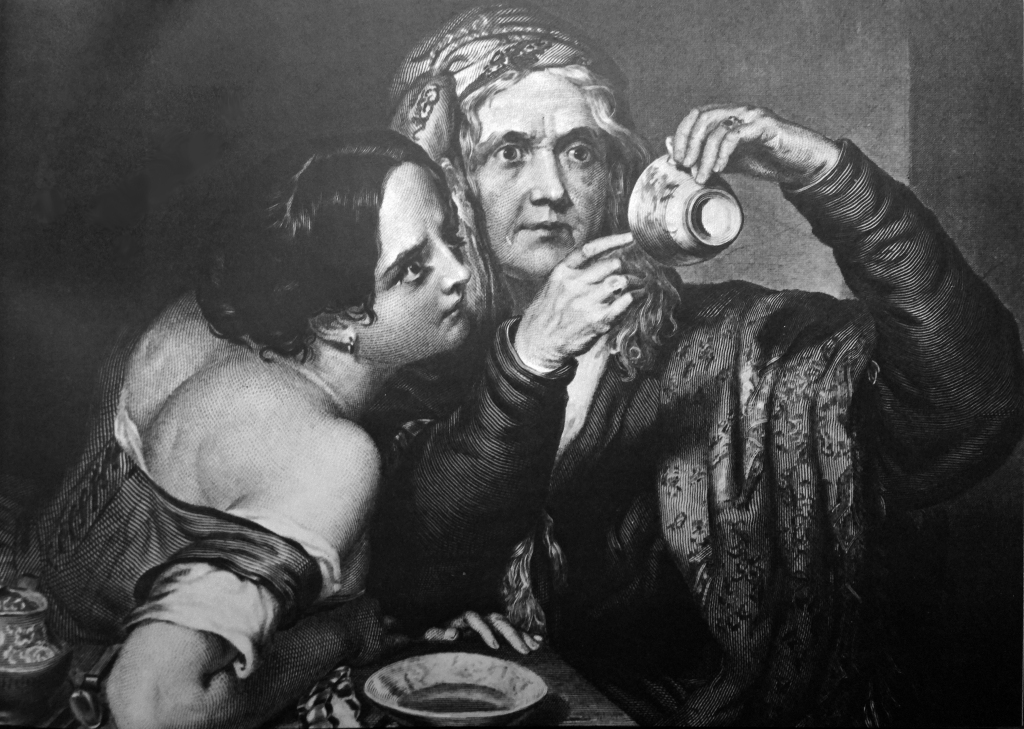
Lovers cruelly, deliciously seperated by a small marble-topped table. Their bodies are damn near humming with the strain of not rushing into one another’s arms. They drink in each other’s eyes instead, caccooned by the murmured conversations of other patrons, the jovial grumbling of the waiters and the hasty comings and goings of their footsteps, the ruffle of newspapers, the scrapping of chairs, the clinking of teaspoons and the bim-bim! of a passing streetcar outside—to them it’s like so many butterflies fluttering by about them. Their lattés are cooling down between them, by no consciousness decision of theirs, untouched. Perhaps they don’t want to upset the delightful sense of electricity they feel coursing through them with anything as trivial as caffeine. They’re well into their middle years, both married. Their marriages fizzled out. Neither planned for or guessed at an eventual affair, but it happened, almost as if was something that just happened to them. And it’s not that they don’t feel bad either. They feel exceedingly conflicted. One of them has a young child. The anticipated pain of it all is excruciating. “Darf’s noch was sein?” the Oberst asks half an eternity later—may I bring you anything else?
Or students cramming for exams, writing papers, clobbering together a presentation.
Or suits, business men and women wheeling and dealing, going through the motions, finding symbioses, shafting each other.
Journalists and lawyers and politicians, mulling over the probable repercussions of the latest corruption scandal.
Somebody coding, in a state of flow, spine like a question mark, head in her laptop, hardly aware of anything around her.
Artists holding court, talking to their friends about their projects instead of working on them. Oh, such delicious procrastination.
Or a group of profusely disillusioned young men, plotting terror.
Or a warehouse clerk slowly sipping a Gemischter Satz to avoid going home to his wife. He stands up and goes to the WC, empties his bladder. Strolling back to his wine, he bumps into the table of another solitary patron, somebody he bullied toward the end of his time at primary school. They recognise each other in a flash. The clerk, after a minute of going ‘ah’ and ‘em,’ collapses into the free chair unbidden and launches into a long and clumsy apology. The other one… nods. Not much more is said. The clerk beats just as clumsy a retreat. He walks home barefoot that night, on the dirty Viennese sidewalks, shoes dangling from two fingers, his face turned up to the summer rain. He’s not felt better in forty years.
This is speculative entertainment, unadulterated by any evidence or observation. Like the disclaimer in novels has it: any resemblence to actual persons or events is purely coincidental. But making up such espresso-sized fictions awakens one’s mind to the hidden and unknowable richness of stories behind this modest brown powder.
History coffee
What will people make of Viennese grounds one hundred years from now, in the early 22nd century?
There is no way of knowing. The only clue we have is a thought exercise that puts us in a similar pair of shoes: imagine we found some one hundred year old grounds today, the remains of coffees drunk throughout the city’s many wonderful cafés when the likes of Robert Musil, Elias Canetti, Gustav Klimt and Egon Schile regularly rubbed shoulders in their favourite ones. Most of the grounds would’ve been produced by people from all walks of life, of course. But people who walked about and talked and drank their coffee in a world unrecognisable to us. How would we look upon such grounds and the fact that they survived?
I try to imagine a city without cars but horse drawn carriages instead, the streets lousy with horse manure. The city was then the capital of a large empire, ruled over by a Kaiser sat upon a throne.
There is a dramatic irony in knowing that its days were numbered, that this empire (the Austro-Hungarian) would soon be reduced to a republic 13.5 per cent of its size. Speaking of which, Vienna at the time not only counted world-famous composers and painters and psychoanalysts among its notable residents. In 1913 Hitler, Stalin, Tito and Trotsky lived there within a few kilometers of each other. Each frequented their own favourite Kaffeehaus.
Archduke Franz Ferdinand, the heir presumptive to the Kaiser’s throne, resided at the Belvedere Palace. I’m guessing he didn’t often set foot in a coffeehouse. He certainly never made it to the throne. With the hindsight of more than one hundred years, it seems old Ferdi was born, quite specifically, to die. To take a bullet in Sarajevo. None of it was preordained, of course. It just happened. So it goes.
It was the spark that set off one of the greatest conflagrations in human history.
So what would we make of spent coffee grounds from that time? They won’t shed any light on that period. They cannot. But I suspect that they would help me feel a direct connection to the past that no number of blunderbusses or historical documents could match. It would fascinate me to no end.
I would marvel at the survival of such an unlikely and fragile artefact, something that under normal circumstances is broken down in a matter of days. How strange that this stuff would’ve survived when all of the people who drank this coffee are now dead. Perhaps many of the jobs that they used to do no longer exist either. Such grounds would be intensely personal and everyday, yet perfectly anonymous and mute as the grave.
My mind would be resonating with thoughts like these: somebody drank this coffee before Hitler’s rise to power and before the Nazi regime industrially murdered six million Jews. Before the US instantaneously evaporated tens of thousands of civilians by dropping atomic bombs on the Japanese cities of Hiroshima and Nagasaki. Before a group of men flew to the moon and drove around up there in an electric vehicle.
I’d remind myself that this must’ve been part of the last few tons of coffee that made it into Central Europe, before collapsing supply chains and war-time rationing made scarcity abundant. Coffee has never been a necessity, not in the strict sense of the word, but I suspect that it’s such simple and ultimately unimportant things that people miss the most once they’re not to be had anymore. We know that they started making Ersatzkaffee out of anything to hand. Chicory root is the classic, but attempts were also made by roasting and grinding carrots, potato peels, corn, chestnuts, rose hip, beechnuts, grape seeds, wheat bran, acorns, rye, date seeds, figs, lupins, chickpeas, persimmon seeds, almonds, malted barley, asparagus, beetroot, okra seeds, dandelion root, soybeans, cotton seeds and peas. (This is far from an exhaustive list.) None of it contained any caffeine, but people still wanted a warm, dark drink, a reminder, albeit a poor one, of real coffee and the daily rituals of normal, peacetime life.
It’s safe to say that less history will be concentrated in our present day Vienna than was the case a century ago. And I for one am glad. That much history is never a good thing, when you and/or your loved ones are down there on ground zero. That being said, I’m also convinced that people in the 22nd century will look back at us, all of us, with at least as much incomprehension as we do at the Europeans of one hundred years ago.
(to be continued)